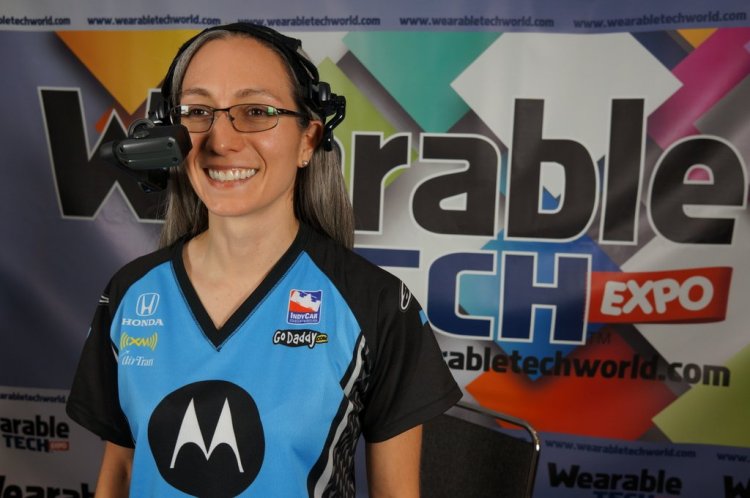With a title like “senior maverick,” it’s no surprise that Motorola Solutions’ Nicole Tricoukes has an optimistic vision for the future of wearables.
Even though wearables today are mostly targeted at consumers, Tricoukes, the head of Motorola Solutions’ HC1 headset computer project, believes they’ll be far more useful to businesses.
“I do think the enterprise is going to embrace wearable mobiles a lot faster [than the past wast of mobile devices], and I think it’s going to be the fastest to benefit,” Tricoukes said in an interview with the VentureBeat last week at the Wearable Tech Expo. “I think companies are going to find new avenues and ways to serve their customers. I think they’re [wearables] going to be the front-end, to the data acquisition that drive the backend [data] analytics.”
At Motorola Solutions — the government and enterprise portion of Motorola that was split out in 2011 (Moto’s consumer handset business became Motorola Mobility) — Tricoukes has been developing a rugged headset computer for businesses that’s powered by voice command, and allows for things like remote video chats or displaying complex equipment schematics.
It may not be as elegant as Google Glass, its nearest competitor, but the HC1 headset is far more attuned to the needs of enterprise users. While Google initially pitched Glass as something meant for consumers, the HC1 has been aimed at businesses from the start. (Some organizations, like the NYPD, are also testing out Google Glass for more professional uses.)
In particular, Tricoukes says enterprise customers will quickly learn how wearables could be worth the investment. The HC1, which is currently in testing and is expected to cost around $4,000 to $5000, could be an ideal way for a senior employee to look over the shoulder of one of their subordinates remotely. That could be particularly useful if the junior employee is on the other side of the globe.
“Very often in industries, especially for high value assets, the wrong part is ordered,” Tricoukes said. “Sometimes these parts are upwards of $100,000 … You can’t afford half a million dollar errors, you can’t even afford $50,000 or $10,000 errors.”
Someone wearing a device like the HC1 could help avoid those issues by double-checking the specific part that’s needed in the field.
Tricoukes didn’t have much to say about Zebra Technologies’ $3.45 billion acquisition of Motorola Solutions’ enterprise segment, which includes her HC1 project, but she noted that there’s a “strong passion for the future of wearables” at the new company.

VentureBeat's mission is to be a digital town square for technical decision-makers to gain knowledge about transformative enterprise technology and transact. Learn More




